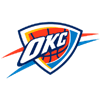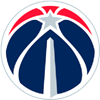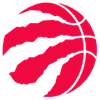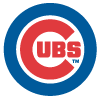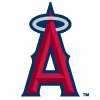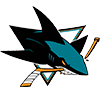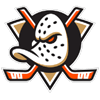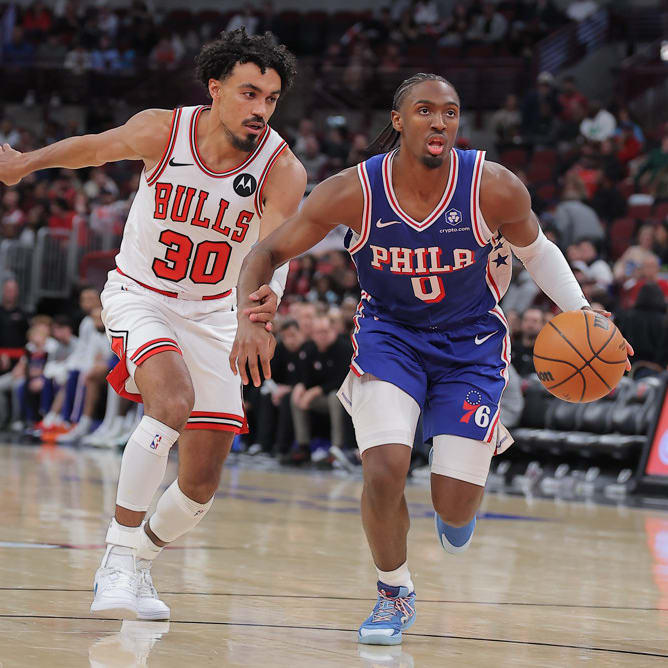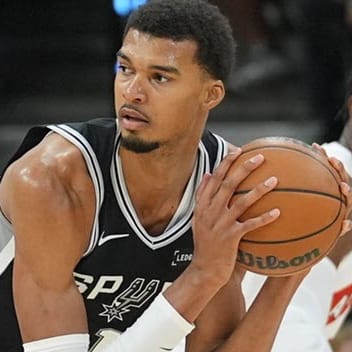Whether we're talking about stashes in dynasty leagues or rookies who could make a positive contribution in redraft leagues, this is not shaping up to be a notably great fantasy draft class.
The players who will go in the 10-to-25 range are as good as they are in a normal year, but the guys projected near the top are much worse than the typical player selected in those slots. There are players with fairly high ceilings who are unlikely to approach those ceilings and there are players with fairly high floors and unexciting, realistic ceilings -- those are the two types of players who will come off the board in the first half of the lottery.
Look no further than the fact that the Warriors are reportedly valuing their top-three protected 2021 first-round pick from the Timberwolves over the No. 2 overall pick in this draft. The one thing this class does have, though, is solid depth throughout.
For the sake of clearly distinguishing which type of player each prospect is, I have divided my favorite prospects for dynasty leagues into four NBA player types.
Primary Ball Handlers
These are the only two prospects in this class who will be developed as their team's primary ball handler. The offense will be tailored to their strengths and weaknesses, and they will be given an opportunity to develop into efficient pick-n-roll ball handlers who can shoot off the dribble and make their teammates better in transition and in the halfcourt.
Whether we're talking about stashes in dynasty leagues or rookies who could make a positive contribution in redraft leagues, this is not shaping up to be a notably great fantasy draft class.
The players who will go in the 10-to-25 range are as good as they are in a normal year, but the guys projected near the top are much worse than the typical player selected in those slots. There are players with fairly high ceilings who are unlikely to approach those ceilings and there are players with fairly high floors and unexciting, realistic ceilings -- those are the two types of players who will come off the board in the first half of the lottery.
Look no further than the fact that the Warriors are reportedly valuing their top-three protected 2021 first-round pick from the Timberwolves over the No. 2 overall pick in this draft. The one thing this class does have, though, is solid depth throughout.
For the sake of clearly distinguishing which type of player each prospect is, I have divided my favorite prospects for dynasty leagues into four NBA player types.
Primary Ball Handlers
These are the only two prospects in this class who will be developed as their team's primary ball handler. The offense will be tailored to their strengths and weaknesses, and they will be given an opportunity to develop into efficient pick-n-roll ball handlers who can shoot off the dribble and make their teammates better in transition and in the halfcourt.
LaMelo Ball, Illawarra Hawks
Ball is the best passer in the draft and also has the best handle. His shot selection has been pretty bad, which has contributed to mediocre three-point efficiency. A bet on Ball is a bet that he will develop into at least a 36 percent shooter, which would unlock a dynamic offensive skill set. If that doesn't happen, he could be a similar player to Ricky Rubio or Rajon Rondo, thanks to his 6-foot-7 frame and preternatural passing.
He won't be quite the defender his brother is, but he is much less passive than Lonzo on offense. He has the upside to average double-digit assists in his peak seasons, which would make him incredibly valuable in fantasy. Minnesota would be the ideal landing spot, but in reality, any team that drafts Ball will be signing up for him to run the offense.
Killian Hayes, Ulm
Hayes is very left-hand dominant and his three-point shot is a work in progress. By NBA starting point guard standards, he is, at best, an average athlete and a good-not-great passer and ball-handler. His shot is his swing skill. Unlike Ball, if Hayes' three-point shot doesn't manifest, he could be relegated to a fairly minor role, but there are many evaluators who really believe in him as a shooter, as he is already pretty solid off the dribble, he's just struggled as a catch-and-shoot guy. If everything clicks, he could produce like prime Mike Conley for fantasy.
Secondary Ball Handlers
These players may get to run the offense with the second unit or develop into primary ball handlers in a couple years, but in most cases, they will need to earn a usage rate over 25 percent. Guys like Kawhi Leonard and Jayson Tatum are secondary ball handlers, so there's no shame in being in this tier.
Anthony Edwards, Georgia
Edwards is a pretty polarizing prospect. His 33-point second half against Michigan State at the Maui Invitational was probably the most impressive performance from last season of any prospect in this class, but his basketball IQ and work ethic are widely panned. Players with those pre-draft concerns almost never reach their ceilings.
It's possible to envision Edwards as an inefficient, 28-point-per-game scorer on a bad team, but he could do so without helping a ton in the other fantasy categories. If he doesn't make it as the lead dog on a team, it's hard to see Edwards fitting in as a complementary piece, given his lack of feel and his shortcomings when the ball is not in his hands.
Tyrese Haliburton, Iowa State
Haliburton is arguably the safest prospect in this class. He is a good passer and a good spot up shooter. At 6-foot-5, he can guard some 1's, most 2's and the occasional 3, so he fits nicely on any roster. His basketball IQ and feel for the game are also pluses. While he has been classified by some as a point guard, I don't think he is dynamic enough with the ball in his hands to be a starting point guard in the NBA, but he could be a starting shooting guard who is a better passer than most 2's.
With that said, Haliburton could eventually develop into a player who can do more with the ball in his hands, as he has a strong work ethic and has improved every year. He averaged 15.2 points, 5.9 rebounds, 6.5 assists and 2.5 steals while shooting 41.9 percent from three and 82.2 percent from the line as a sophomore at Iowa State. He has shades of a shorter Nicolas Batum, in that his worst fantasy categories might be points and blocks.
Tyrell Terry, Stanford
There probably won't be a Damian Lillard/Trae Young level off-the-dribble shot maker in this class, but if there is one, Terry is the guy. He shot 89.1 percent from the line and 40.8 percent from three as a freshman, and many of his three-point attempts were difficult looks. At 6-foot-3 and roughly 175 pounds, he lacks ideal physicality, but he is a hard worker and competitor who may be only scratching the surface of his offensive potential. If he hits his ceiling as a shooter, he could evolve into a primary ball handler who really stretches the defense.
R.J. Hampton, New Zealand Breakers
Hampton might have the best combination of speed and athleticism in this class, and at 6-foot-5, 188 pounds, he has excellent size for a point guard. His speed and long strides make him a dangerous downhill threat in the pick-and-roll, but his shot is a work in progress. Hampton has been working with former sharpshooter Mike Miller on his jump shot over the past couple months, which can only be a positive development. Hampton is about as raw from a game action standpoint as any guard projected to go in the first round, but there are a lot of physical tools to like, and he seems to have the drive to get better. Fantasy-wise, Hampton probably won't be much of a factor in Year 1.
Cole Anthony, North Carolina
Anthony was a gunner on offense as a freshman lead guard at North Carolina. He shot 38 percent from the field, 34.8 percent from three and 75 percent from the free throw line, which aren't great marks for a 6-foot-3 point guard prospect. Anthony didn't show much in terms of making his teammates better, averaging just four assists per game. Athletic and strong, Anthony has some potential as a defender, but he carries himself like a leading scorer who doesn't have to give defensive effort. This seems like a classic case of a player with the skills to be a good NBA role player and the mindset of a star -- a combination which can often lead to underwhelming results on the court. Even so, if you believe in the shot getting significantly better, then there's lead guard upside, which is something that can only be said of a handful of prospects in this class.
Desmond Bane, TCU
Bane projects as a quality role player who could be an across-the-board contributor in fantasy. His 3.9 assists per game as a senior at TCU undersell his skill as a passer, and he should also rebound well for a guard. He was a 43.3 percent shooter from three and shot 80.4 percent from the line. At 6-foot-6, 215 pounds, he should be able to guard multiple positions, making him one of the better plug-and-play options in this class.
Jahmi'us Ramsey, Texas Tech
The floor is pretty low with Ramsey, who is at his best with the ball in his hands, but who may not get that type of opportunity early in his NBA career. However, it's not hard to squint and see a very high ceiling as a score-first lead guard in the Gilbert Arenas mold. He is not quite the athletic freak Russell Westbrook was, but he has a similarly strong 6-foot-4, 195-pound frame. He shot 42.6 percent from three on some difficult attempts, but his 64.1 percent mark from the free-throw line is a bit of a red flag.
Kira Lewis Jr., Alabama
One of the better comps in this draft is Dennis Schroder for Lewis. Unfortunately, it's closer to a ceiling comp than a median outcome comp. With the point guard position so deep across the league, it's tough to think of a situation where he would get a chance to start anytime soon, which caps his realistic fantasy ceiling. He may be able to develop into a quality first guard off the bench, like Schoder, but even that outcome is probably 2-3 years afield.
Tyrese Maxey, Kentucky
Other than being poorly utilized at Kentucky and getting drafted in the middle of the first round, Maxey has little in common with Devin Booker or Tyler Herro. He is better on defense than he is on offense, and he shot 29.2 percent from three as a freshman. His role in college didn't allow him to dominate the ball, but he's not a good enough passer to play point guard in the NBA. He could have a long NBA career, but his upside seems capped as the first guard off the bench for a middling team.
Wings
These players will be drafted as role players of various archetypes. Some have the upside to develop into secondary ball handlers, but in essence, they will be expected to guard multiple positions on defense while hitting open threes and moving well without the ball on offense.
Patrick Williams, Florida State
At 6-foot-8, 225 pounds and with a 7-foot wingspan, Williams has the best measurables of the wings in this class. He could develop into a guy who is tasked with checking the best players in the league, but he is very raw offensively. He has an aesthetically pleasing three-point shot and shot 83.8 percent from the line as a freshman at Florida State, so it's easy to project him to be a capable catch-and-shoot guy in the NBA. He averaged 2.5 steals and 2.6 blocks per 100 possessions, and he could conceivably average over a steal and a block per game during his peak years in the league. Williams is also a very active rebounder, particularly on put-back dunks. His handle and passivity are two things that hold him back from being a potential go-to scorer.
Isaac Okoro, Auburn
If Okoro could shoot, he would have a case to be the top pick in the draft. He could be a Marcus Smart type of defender who can guard 1 through 4, and he has the drive and athleticism to get 10-12 points per game just based on transition, hustle, cutting, etc. Unfortunately, he can't shoot -- at least not yet -- so he's a hustle-stats guy in fantasy whose shooting percentages may warrant him unplayable in most formats. Stashing him in dynasty leagues could yield a huge return if his jumper gets fixed, but he probably won't be a net positive anytime soon.
Deni Avdija, Maccabi Tel-Aviv
Avdija could also have been included in the secondary ball handler group -- he can handle and pass well for his size (6-9) -- but that type of role would be very dependent on team context and the development of his jumper. While his shot is aesthetically pleasing, there is not much evidence that he will be a quality three-point shooter in the NBA, and he has been a sub-60% free throw shooter overseas, as well. Not only does his low free-throw percentage portend a low efficiency from three-point range, but it could submarine his value in roto leagues if he can't improve significantly in that area.
Aaron Nesmith, Vanderbilt
While Terry projects to have the most versatile NBA jumper from this class, Nesmith could be a 45 percent shooter in his own right. He shot 52.2 percent from three and 82.5 percent from the line last season at Vanderbilt He is a tireless worker capable of guarding 2's and 3's and is getting better at attacking closeouts. Nesmith is probably going to have a Danny Green type of career where his real-life value always eclipses his fantasy value.
Devin Vassell, Florida State
Vassell's length (6-foot-7, 7-foot wingspan) and three-point percentages in college give him some similarities to Mikal Bridges, but he shot 72 percent from the free-throw line, which is a concerning mark for a player who needs to be a knock down shooter to justify a selection in the lottery. He could chip in steals, blocks and threes at the SG/SF positions, but he probably will be a low-usage role player at the next level.
Jaden McDaniels, Washington
Teams that want to take a hail mary in the late first-round could roll the dice on McDaniels. The freshman from Washington is a couple years away from being a rotation player on a good team, but he is a 6-foot-10 wing could theoretically be an excellent defender and a three-level scorer on offense. He could also be out of the league in a few years, but at a certain point in the draft, some team will think the risk is worth the reward.
Robert Woodard, Mississippi State
At 6-foot-7 and with a 7-foot-1 wingspan, Woodard looks the part of an athletic 3-and-D wing. However, he doesn't have great feel and is a very questionable shooter. In a couple years, he could develop into a rotation player on a good team, so he is a long-term stash in dynasty leagues.
Josh Green, Arizona
Green is one of the best wing defenders in this class, but he had an underwhelming freshman season at Arizona. A strong 6-foot-6, Green should be able to guard three positions in his prime, but a lack of offensive punch makes it likely that he would max out in a Danny Green type of complementary role.
Saddiq Bey, Villanova
Bey is a safe bet to have a lengthy NBA career, but he may never be a starter. He profiles as a 3-and-D combo forward, but has some tweener qualities. He isn't agile enough to check the best 3's and isn't strong enough to check the best 4's. While he shot a high percentage from three as a sophomore at Villanova, he is a career 72.8 percent free-throw shooter and his jumper has the look of one that could lose much of its utility from NBA range.
Bigs
These players will either be unable to play the wing on offense, unable to play the wing on defense or both. There needs to be some level of upside beyond a Cody Zeller type of role for them to be included on this list, as bigs who get 12 and 7 with a solid FG%, middling FT% and little else are replacement level players in most fantasy formats.
James Wiseman, Memphis
Wiseman is a rare athlete, even by NBA standards. At 7-foot-1 and with a 7-foot-5 wingspan, he will have the size and athleticism advantage against most NBA centers. His defense projects to be more valuable than his offense, but he should shoot a solid percentage from the free-throw line relative to other defense-first centers.
There is a chance that he will eventually stretch out to three-point range, but at the very least he will be a good lob and pick-and-roll threat early in his career. Landing on a team like the Warriors would be excellent for his long-term dynasty stock, as he would get a lot of easy looks and could learn in a winning environment where he would theoretically stay engaged and not develop bad habits.
Onyeka Okongwu, USC
An athletic, long 6-foot-9, Okongwu profiles as a prototypical modern center, as he should be able to protect the rim while also holding his own when he gets switched onto smaller players. He should be a blocks and steals maven at peak, and his 61.6 FG% and 72.0 FT% as a freshman suggest he could eventually be a player who helps in every fantasy category other than assists. He will probably be the starter wherever he gets drafted, which would give him a chance to be a viable fantasy option in year one. If his offensive game develops, the fantasy ceiling would be quite high.
Obi Toppin, Dayton
Toppin could win rookie of the year in the right situation, but his fantasy game will likely be limited to points, rebounds, threes and FG%. From a real-life standpoint, his defense could be the most harmful to an NBA team of any prospect projected to go in the lottery, as he doesn't have the lateral agility to guard 4's and would get pushed around by NBA 5's. He will constantly get hunted in pick-n-rolls and will be bullied in the post whenever he is on a quality big man. That said, he has 20 and 10 upside on a bad team, and he could be a volume three-point shooter who doesn't kill your FT%.
Aleksej Pokusevski, Olympicacos
Pokusevski is the closest thing there is in this draft to a unicorn, as he essentially plays like a seven-foot tall combo guard on offense. He can pass, dribble and shoot, but at just 200 pounds, he's far too weak to guard bigs and he lacks the agility to guard on the perimeter. It might be a couple years before he is getting 20-plus minutes per game, but he's an intriguing guy to stash in dynasty leagues.
Vernon Carey Jr., Duke
There have been reports that Carey has slimmed down and improved his three-point shot to the point that he now projects to have the mobility and range to be a modern NBA big -- something that was not believed to be the case when the college season ended. He was a big-time recruit for Duke and showed that he can play bully ball in the paint while cleaning the glass, but if he can now hit threes and hold his own on defense against NBA 5's, that would make him one of the fantasy sleepers from this class.
Jalen Smith, Maryland
Smith might not have the agility to move well on the perimeter or the strength to guard NBA 5's in the post, but he is the best stretch five in this class. He shot 36.8 percent from three and 75 percent from the line as a sophomore at Maryland while also blocking 2.4 shots per game. It's kind of a Myles Turner lite profile that could work on the right team.
Precious Achiuwa, Memphis
Some evaluators believe Achiuwa can guard 1-through-5, and while that might be hyperbole, it properly illustrates the fact that he could eventually average over a block and a steal per game. That said, he doesn't have great touch on offense, and he shot 59.9% from the line as a freshman at Memphis, so he could be a percentages drain until further notice.
Paul Reed, DePaul
Reed averaged 1.9 steals and 2.6 blocks per game as a junior at DePaul. He also shot 73.9 percent from the line in college, so if everything were to break right, he could be a center who helps in every category except assists. That outcome is fun to dream on, but ultimately not very realistic.
Isaiah Stewart, Washington
Stewart shot 57 percent from the field and 77.4 percent from the line as a freshman at Washington and while he didn't take many threes, his stroke isn't bad and he could eventually stretch out to the corners. He plays hard and runs the floor well. His post game is strong, but NBA teams probably won't look to utilize that much. Like almost every center in this class, his fantasy potential is dependent on getting starter's minutes or something close to it.







